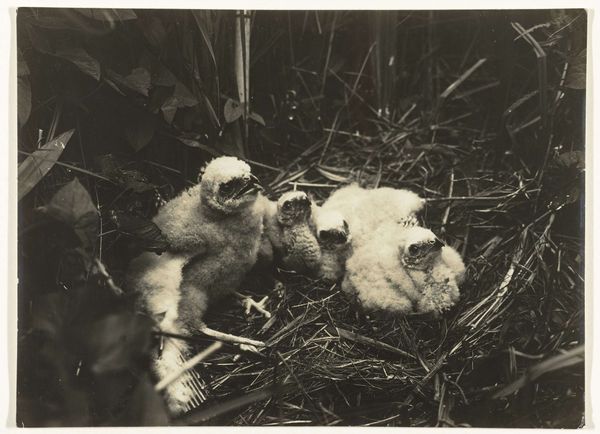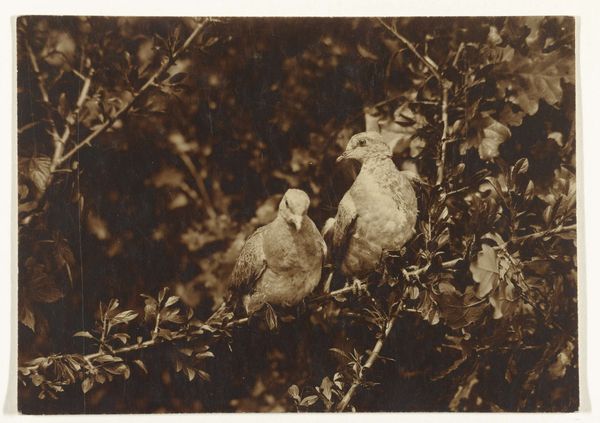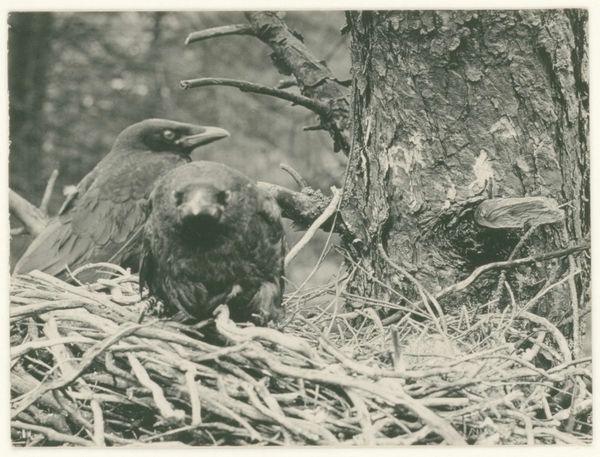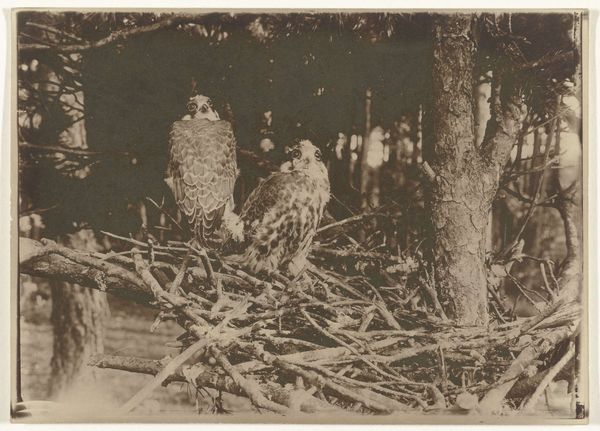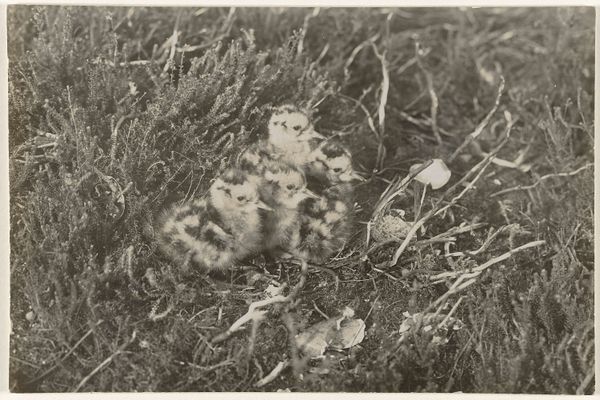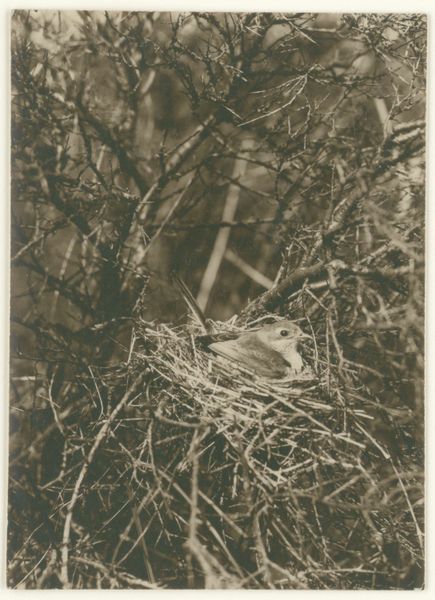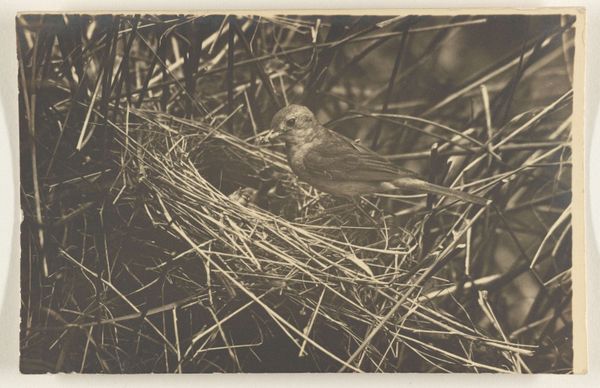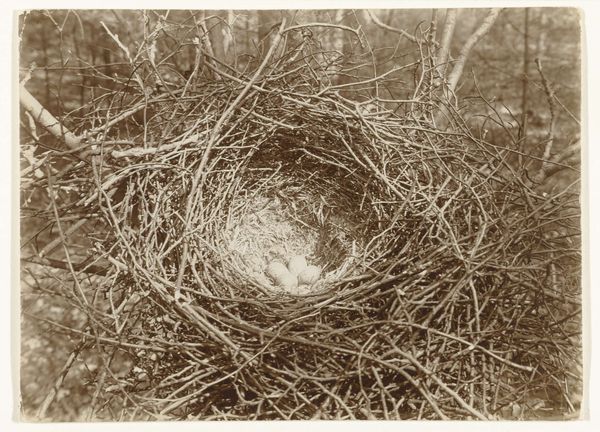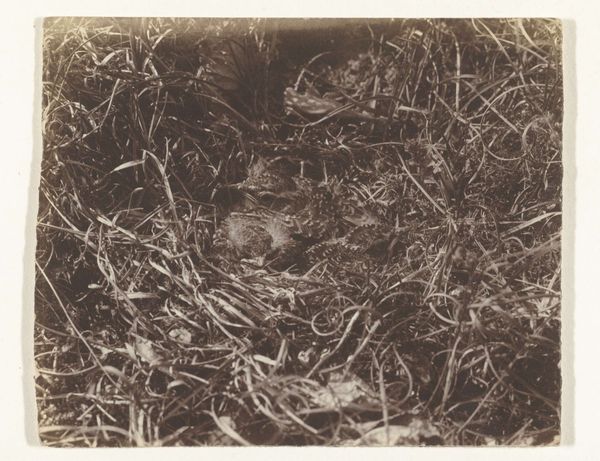
photography
#
portrait
#
still-life-photography
#
natural tone
#
landscape
#
natural colouring
#
photography
#
botanical photography
#
naturalism
Dimensions: height 66 mm, width 124 mm
Copyright: Rijks Museum: Open Domain
Editor: Here we have Richard Tepe's photograph, "Twee jonge vogels op een nest," or "Two Young Birds in a Nest," taken sometime between 1900 and 1930. It has a very intimate feel, like we're intruding on a private moment. What historical perspectives can you offer on this piece? Curator: This image invites consideration of the changing relationship between humans and nature in the early 20th century. The rise of photography allowed for unprecedented access to the natural world, influencing both scientific study and popular perceptions. Given its composition and period, consider its role within ornithology and emerging conservation movements. What was the perceived relationship between humans and the natural world when this image was created? Editor: That's interesting, so photography contributed to a new understanding of wildlife? Do you think this was intended to be seen as scientifically informative, or more for aesthetic enjoyment? Curator: It’s likely both. During this period, photography was gaining traction as a tool for scientific documentation but was also influenced by artistic naturalism. These types of images often reinforced ideas about nature's innocence and vulnerability, resonating with growing anxieties about industrialization and urban expansion. Where would photographs like these have been displayed and for whom? Editor: Maybe in magazines, or nature societies, shared amongst scientists, artists, or amateur birdwatchers. Did the artistic choices made by Tepe also play into a broader social commentary? Curator: Certainly. Tepe's choice to present the birds in this natural, seemingly untouched state subtly speaks to the romanticized views of nature at the time. How does framing a seemingly 'objective' image contribute to those ideals of nature? Editor: I see! So it’s not just a picture of birds, it's participating in this broader cultural narrative about our relationship with nature. Thank you, that's given me a lot to consider. Curator: Precisely. It demonstrates how seemingly simple imagery can engage with complex socio-political ideas and influence our understanding of the natural world. I, too, am now considering other photographic series of that period with a fresh lens.
Comments
No comments
Be the first to comment and join the conversation on the ultimate creative platform.
